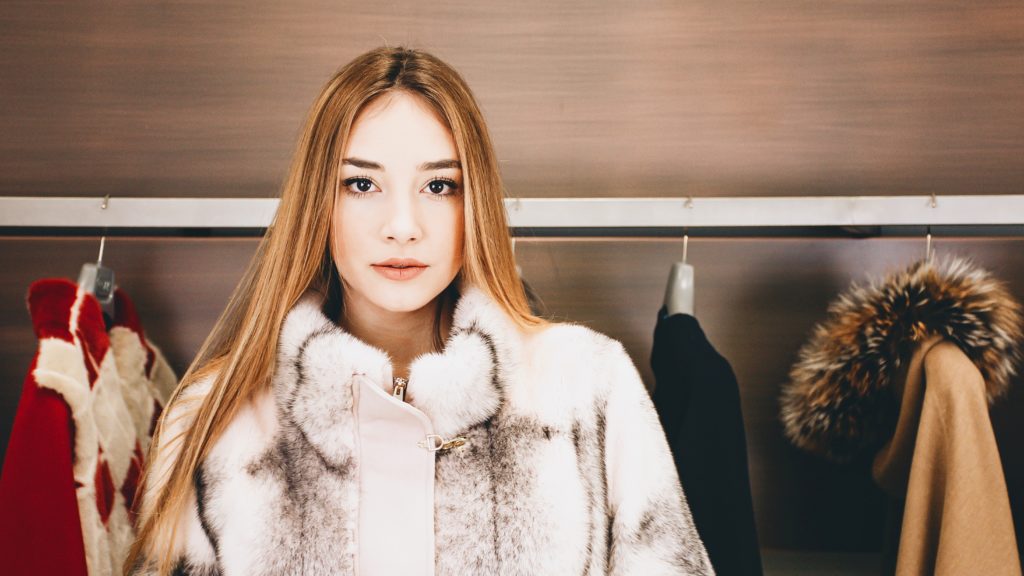In the next two to three years, Denmark’s Kopenhagen Fur, which sold 24.8 million mink skins between 2018 and 2019, as well as significant amounts of fox, chinchilla, and karakul pelts, will be no more. In a move that could signal the beginning of the end for the trade, the world’s largest fur auction house is closing its doors for good. The news of the closure follows the Danish government’s recent order for a mass mink cull.
Why is Denmark culling mink?
Denmark is the biggest producer of mink fur in the world. But according to Danish prime minister Mette Frederiksen, the 15 million mink currently living on farms in the country have now become a public health risk.
The government gave its order in response to reports of a COVID-19 mutation, which has passed from minks back to humans. Twelve people are known to have this particular form of the mutated virus, called Cluster 5.
Farmers have disclosed coronavirus cases in thousands of mink all over the world, and several mutations have been reported, but Cluster 5 is particularly concerning to scientists. This is because it impacts the spike protein, the target of some vaccines currently in development.
A report by the European Centre for Disease Prevention and Control, released a few hours before Kopenhagen Fur’s announcement, also highlighted concerns that the evolution of the virus could undermine the effectiveness of future COVID-19 vaccines.
The Danish government admitted its order was made without legal basis (resulting in policial outcry), but it still recommends that farmers proceed with the culls. And they have been. The BBC reports that mass graves, filled with slaughtered minks, are now appearing in the Danish countryside.

So, is this the end of the mink fur trade?
Kopenhagen Fur is owned by 1,500 Danish farmers who sell fur within it. The house has reported it will continue with its pre-planned auctions next year (sourced from “healthy farms outside the restricted zones”), as well as sales in 2022 and 2023. After that, it will shut its doors permanently.
In a release on its website, Kopenhagen Fur stated: “Unfortunately, the loss of the Danish mink production means that the ownership base disappears and therefore, the company’s management has decided to gradually downsize the company and make a controlled shutdown over a period of 2-3 years.”
According to Joanna Swabe, the Humane Society International’s senior director of public affairs, the COVID-19 mutation and Kopenhagen Fur’s closure could be a tipping point for Denmark’s fur trade.
“[The announcement by Kopenhagen Fur] could very well signal the beginning of the end of the fur trade,” she said in a statement. “Fur farms are not only the cause of immense and unnecessary animal suffering, but they are also ticking time bombs for deadly diseases.”
In her opinion, governments must compensate farmers for the culls, and then bring an end to the industry for good. She added: “[Lets] focus instead on supporting farmers to move to humane, safe, and economically viable livelihoods.”
Is it ethical to cull millions of mink?
Many animal rights and anti-fur activists argue that there was never anything ethical about breeding minks for fur in the first place. The COVID-19 outbreaks, mutations, and subsequent culls are a crushing consequence of this practice.
The animals are kept close together, in separate small wire cages. According to the Coalition to Abolish the Fur Trade, this prevents them from carrying out their natural behaviors. This can result in symptoms of psychosis, like self-mutilation and cannibalism.
Mink farms are also harmful to the environment. Raising millions of animals requires energy, feed, land, water, and more resources. According to MTT Agrifood Research Finland, the carbon footprint of one mink skin is the same as the daily footprint of the average consumer in Finland.
Swabe notes, in the fur industry, “there was never going to be a happy ending for the animals.”
Closing the farms now, and stopping breeding altogether, would put a stop to more needless suffering and planetary harm. It would also reduce the risk of more zoonotic disease outbreaks.
According to the U.S. Centers for Disease Control and Prevention, 75 percent of new emerging infectious diseases have come from animals. Swabe says: “We cannot simply sit back and wait for the next pandemic to emerge from [mink farms].”
Benny Andersson, the CEO of Swedish animal rights organization Djurens Rätt, agrees with Swabe. “This is a tiny sector,” he told the Guardian. “We could easily live without it, given the risk of compromising a vaccine. We should be shutting down mink farms and culling all the animals. Sick animals are not being treated, which is another mink welfare issue.”
The Humane Society Veterinary Medical Association has also backed up Swabe and Andersson’s standpoint. In a statement, it noted that mutation without a cull was bad for humans and mink. It stated: “Mink, who are already stressed from the unnatural living conditions, experience severe respiratory distress before dying.”
Even before COVID-19, fashion was turning its back on fur
In yet more proof that the fur industry’s time is up, many major fashion houses have passed fur bans in recent years. Gucci, Chanel, Versace, Armani, and Prada are among the major fashion companies that have said “no more” to the industry. In 2018, Donatella Versace, head of Versace, said: “Fur? I am out of that. I don’t want to kill animals to make fashion. It doesn’t feel right.”
Also in 2018, Kim Kardashian announced all of her fur coats would be remade in faux, and at the beginning of 2020, Vogue editor-in-chief Anna Wintour stepped out in Stella McCartney’s sustainable fur-free fur. Even Queen Elizabeth II is fur-free now.
The closure of Kopenhagen Fur is just another nail in the coffin of an already dying industry. Swabe says, “It’s time to turn off the life-support machine for this archaic trade.”


